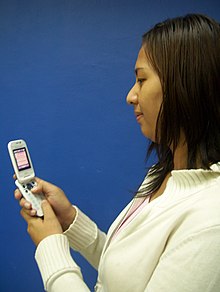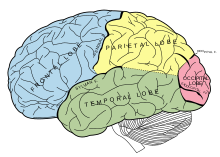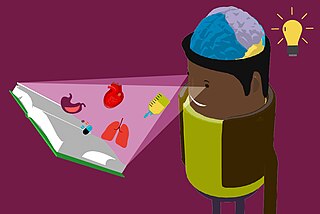Phenomena
Judgment of learning
Judgments of learning (JOLs) or metamemory judgments are made when knowledge is acquired. [5] Metamnemonic judgments are based on different sources of information, and target information is important for JOLs. Intrinsic cues (based on the target information) and mnemonic cues (based on previous JOL performance) are especially important for JOLs. [5] Judgment of learning can be divided into four categories: ease-of-learning judgments, paired-associate JOLs, ease-of-recognition judgments, and free-recall JOLs. [11]
Ease-of-Learning Judgments: These judgments are made before a study trial. Subjects can evaluate how much studying will be required to learn the particular information presented to them (typically cue-target pairs). [11] These judgments can be categorized as preacquisition judgments which are made before the knowledge is stored. Little research addresses this kind of judgment; however, evidence suggests that JOLs are at least somewhat accurate at predicting learning rates. [15] Therefore, these judgments occur in advance of learning and allow individuals to allot study time to the material that they are required to learn.
Paired-Associate Judgment of Learning: These judgments are made at the time of study on cue-target pairs and are responsible for predicting later memory performance (on cued recall or cued recognition). One example of paired-associate JOLs is the cue-target JOL, where the subject determines the retrievability of the target when both the cue and target of the to-be-learned pair are presented. [11] Another example is the cue-only JOL, where the subject must determine the retrievability of the target when only the cue is presented at the time of judgment. [11] These two types of JOLs differ in their accuracy in predicting future performance, and delayed judgments tend to be more accurate. [11]
Ease-of-Recognition Judgments: This type of JOL predicts the likelihood of future recognition. [11] Subjects are given a list of words and asked to make judgments concerning their later ability to recognize these words as old or new in a recognition test. [11] This helps determine their ability to recognize the words after acquisition.
Free-Recall Judgments of Learning: This type of JOL predicts the likelihood of future free-recall. In this situation, subjects assess a single target item and judge the likelihood of later free-recall. [11] It may appear similar to ease-of-recognition judgments, but it predicts recall instead of recognition. [15]
Feeling of knowing judgments

Feeling of Knowing (FOK) judgments refer to the predictions an individual makes of being able to retrieve specific information (i.e., regarding his or her knowledge for a specific subject) and, more specifically, whether that knowledge exists within the person's memory. [6] These judgments are made either prior to the memory target being found [16] or following a failed attempt to locate the target. Consequently, FOK judgments focus not on the actual answer to a question, but rather on whether an individual predicts that he or she does or does not know the answer (high and low FOK ratings respectively). FOK judgments can also be made regarding the likelihood of remembering information later on and have proven to give fairly accurate indications of future memory. [6] An example of FOK is if you can't remember the answer when someone asks you what city you're traveling to, but you feel that you would recognize the name if you saw it on a map of the country.
An individual's FOK judgments are not necessarily accurate, and attributes of all three metamemory hypotheses are apparent in the factors that influence FOK judgments and their accuracy. For example, a person is more likely to give a higher FOK rating (indicating that they do know the answer) when presented with questions they feel they should know the answer to. [17] This is in keeping with the cue familiarity hypothesis, as the familiarity of the question terms influences the individual's judgment. [18] Partial retrieval also impacts FOK judgments, as proposed by the accessibility hypothesis. The accuracy of an FOK judgment is dependent upon the accuracy of the partial information which is retrieved. Consequently, accurate partial information leads to accurate FOK judgments, while inaccurate partial information leads to inaccurate FOK judgments. [5] FOK judgments are also influenced by the number of memory traces linked to the cue. When a cue is linked to fewer memory traces, resulting in a low level of competition, a higher FOK rating is given, thus supporting the competition hypothesis. [19]
Certain physiological states can also influence an individual's FOK judgments. Altitude, for instance, has been shown to reduce FOK judgments, despite having no effect on recall. [20] In contrast, alcohol intoxication results in reduced recall while having no effect on FOK judgments. [21]
Knowing that you do not know
When someone asks a person a question such as "What is your name?", the person automatically knows the answer. However, when someone asks a person a question such as "What was the fifth dinosaur ever discovered?", the person also automatically knows that they do not know the answer.

A person knowing that they do not know is another aspect of metamemory that enables people to respond quickly when asked a question that they do not know the answer to. In other words, people are aware of the fact that they do not know certain information and do not have to go through the process of trying to find the answer within their memories, since they know the information in question will never be remembered. One theory as to why this knowledge of not knowing is so rapidly retrieved is consistent with the cue-familiarity hypothesis. The cue familiarity hypothesis states that metamemory judgments are made based on the familiarity of the information presented in the cue. [5] The more familiar the information in the memory cue, the more likely a person will make the judgment that they know that the target information is in memory. With regards to knowing that you don't know, if the memory cue information does not elicit any familiarity, then a person quickly judges that the information is not stored in memory.
The right ventral prefrontal cortex and the insular cortex are specific to "knowing that you don't know", whereas prefrontal regions are generally more specific to the feeling of knowing. [22] These findings suggest that a person knowing that they do not know and feeling of knowing are two neuroanatomically dissociable features of metamemory. As well, "knowing that you don't know" relies more on cue familiarity than feeling of knowing does. [22]
There are two basic types of "do not know" decisions. First is a slow, low confidence decision. [23] This occurs when a person has some knowledge relevant to the question asked. This knowledge is located and evaluated to determine whether the question can be answered based on what is stored in memory. In this case, the relevant knowledge is not enough to answer the question. Second, when a person has zero knowledge relevant to a question asked, they are able to produce a rapid response of not knowing. [23] This occurs because the initial search for information draws a blank and the search stops, thus producing a faster response.
Remember vs. know
The quality of information that is recalled can vary greatly depending on the information being remembered. It is important to understand the differences between remembering something and knowing something. If information about the learning context accompanies a memory (i.e. the setting), it is called a "remember" experience. However, if a person does not consciously remember the context in which he or she learned a particular piece of information and only has the feeling of familiarity towards it, it is called a "know" experience. [24] It is widely believed that recognition has two underlying processes: recollection and familiarity.[ citation needed ] The recollection process retrieves memories from one's past and can elicit any number of associations of the prior experience ("remember"). In contrast, the familiarity process does not elicit associations with the memory and there are no contextual details of the prior learning occurrence ("know"). [25] Since these two processes are dissociable, they can be affected by different variables (i.e. when remember is affected know is not and vice versa). [5] For example, "remember" is affected by variables such as depth of processing, generation effects, the frequency of occurrence, divided attention at learning, and reading silently vs. aloud. In contrast, "know" is affected by repetition priming, stimulus modality, amount of maintenance rehearsal, and suppression of focal attention. There are cases however, where "remember" and "know" are both affected, but in opposite ways. An example of this would be if "remember" responses are more common than "know" responses. This can occur due to word versus nonword memory, massed versus distributed practice, gradual versus abrupt presentations, and learning in a way that emphasizes similarities vs. differences. [5]
Another aspect of the "remember" versus "know" phenomenon is hindsight bias, also referred to as the "knew it all along effect". This occurs when a person believes that an event is more deterministic after it has happened. [5] That is, in the face of the outcome of a situation, people tend to overestimate the quality of their previous knowledge, thus leading the person to a distortion towards the provided information. Some researchers believe that the original information gets distorted by the new information at the time of encoding. [26] The term "creeping determinism" is used to emphasize the fact that it is completely natural for one to integrate outcome information with the original information to create an appropriate whole out of all the pertinent information. [27] Although it was found that informing individuals about the hindsight bias before they took part in experiments did not decrease the bias, it is possible to avoid the effects of the hindsight bias. [26] Further, by discrediting the outcome knowledge, people are better able to accurately retrieve their original knowledge state, therefore reducing the hindsight bias. [28]
Errors in being able to differentiate between ‘remembering’ versus ‘knowing’ can be attributed to a phenomenon known as source monitoring. This is a framework where one tries to identify the context or source from which a particular memory or event has arisen. This is more prevalent with information that is ‘known’ rather than ‘remembered’.
Prospective memory

It is important to be able to keep track of future intentions and plans, and most importantly, individuals need to remember to actually carry out such intentions and plans. This memory for future events is prospective memory. [29] Prospective memory includes forming the intention to carry out a particular task in the future, which action we’re going to use to carry out the action, and when we want to do it. Thus, prospective memory is in use continuously in day-to-day life. For example, prospective memory is in use when you decide that you need to write and send a letter to a friend.
There are two types of prospective memory; event-based and time based. [5] Event-based prospective memory is when an environmental cue prompts you to carry out a task. [5] An example is when seeing a friend reminds you to ask him a question. In contrast, time-based prospective memory occurs when you remember to carry out a task at a specific time. [5] An example of this is remembering to phone your sister on her birthday. Time-based prospective memory is more difficult than event-based prospective memory because there is no environmental cue prompting one to remember to carry out the task at that specific time. [5]
In some cases, impairments to prospective memory can have dire consequences. If an individual with diabetes cannot remember to take their medication, they might face serious health consequences. [29] Prospective memory also generally gets worse with age, but the elderly can implement strategies to improve prospective memory performance. [5]









